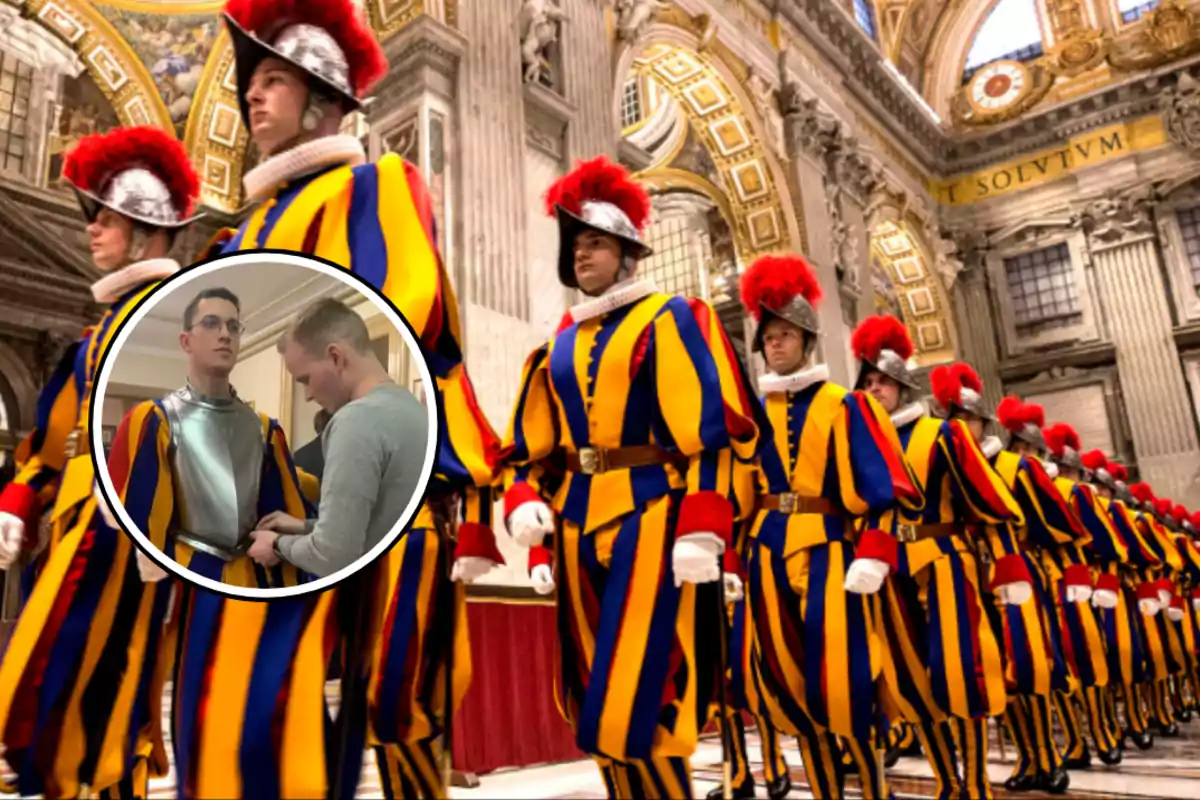
This is how the Vatican's Swiss Guard greeted the new Pope Leo XIV
The Swiss Guard honors the new Pontiff Leo XIV with a ritual full of symbolism and centuries-old loyalty
Every time a new Pope assumes the leadership of the Church, the Swiss Guardof the Vatican performs a ritual full of tradition. This ceremony, more symbolic than formal, reflects their historical role as a military body dedicated to the protection of the Pontiff.
Composed of 135 soldiers, this small force guards the half-square-kilometer territory occupied by the Vatican City. All its members are Swiss, Catholic men, between 19 and 30 years old, who have already completed at least four months of mandatory military service in their country of origin and exceed 1.74 meters (5 feet 8 inches) in height.
This is the official greeting to the new Pope
The most representative moment of the ritual consists of a ceremony in which the soldiers reaffirm their loyalty. Although the formal annual oath occurs every May 6, a date that commemorates the heroic defense of 147 Swiss guards during the sack of Rome in 1527, when there is a new Pope, the entire Swiss Guard renews their loyalty to him.
During the ceremony, each guard advances toward the military corps' banner, places his left hand on the flag, and raises his right with three fingers extended, a symbol of the Trinity. Then he pronounces the oath with key words like: "I swear to serve with fidelity, loyalty, and honor to the Supreme Pontiff..."
The soldiers parade in the Courtyard of San Damaso or, on occasions, in the Clementine Hall, wearing their colorful Renaissance uniform in shades of blue, red, yellow, and orange, and carrying their traditional halberds. The new Pope reviews the troops, greets the soldiers one by one, or dedicates a few words of gratitude and blessing to them.
[IMAGE]{1007197}[/IMAGE]
This gesture is complemented by a symbolic changing of the guard at emblematic places such as the doors of the papal apartments or St. Peter's Square, indicating that the soldiers are officially at the service of the new leader of the Church.
The Pope, meanwhile, usually grants them his apostolic blessing and, in some cases, receives them in a private audience along with the officers and chaplains of the corps.
A military legacy that began with Julius II
The Swiss Guard was born in 1506, when Pope Julius II, in his third year of pontificate, recruited 150 Swiss mercenaries as his personal escort. These fighters enjoyed a solid reputation since the late 14th century, thanks to their skill with the pike and halberd, weapons with which they had defeated powerful feudal cavalries.
While there is no exclusive ceremony called "oath to the new Pope," the papal transition includes symbolic acts of loyalty. The guards assume their role from the moment of the Pontiff's election, formalizing their service with solemn gestures and a renewed commitment.
In essence, the ceremony integrates faith, military tradition, and devotion. The true key act is not the May 6 oath, but the moment when the Swiss Guard places itself at the service of the new Pope, perpetuating a loyalty that has crossed five centuries.
La Guardia Suiza y la lealtad al nuevo papa.
More posts: